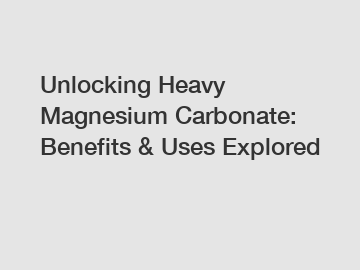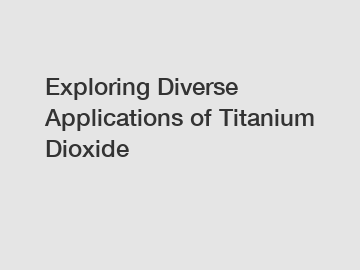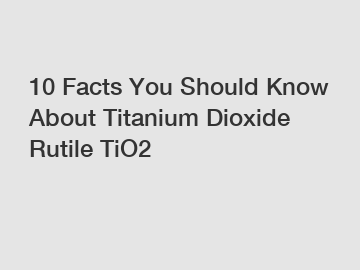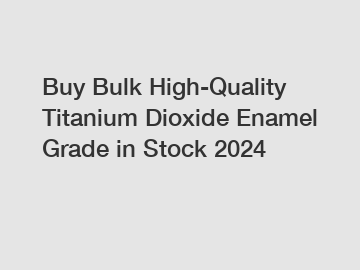Urea Types: Prilled and Granular
May. 13, 2024
Urea Types: Prilled and Granular
Two types of urea include prilled and granules are widely used as fertilizers. They are produced from the reaction between ammonia and carbon dioxide.
Shuanglian Product Page
These types of urea differ in two cases:
- Physical properties
- Applications
This article will help you select the right urea types by understanding the differences between prilled and granular urea.
Prilled Urea
Prilled urea is a form of nitrogen-rich solid fertilizer that has the ability to dissolve quickly in water.
Prilled urea is more commonly used today to resist breaking down when mixing with other fertilizer components like Potassium chloride.
It is also known as ice melting or deicing urea since it can reduce ice efficiently, even at very low temperatures ( -6 ◦C) .
Physical Properties
Small particles of prilled urea are in spherical shape. They have a larger surface area compared to granular urea which causes water to interact with it better and leading to faster dissolution.
One of the challenges with fertilizer is that it breaks down or evaporates when it rains.
The urea prill has a high resistance. This makes urea fertilizer remain longer and we don’t need to use fertilizer in short periods of time.
Prilled Urea Applications
- Direct application to soil or through irrigation systems as a nitrogen fertilizer
- Utilization in NOx control systems for nitrogen oxide control in diesel engines
- Use as a nitrogen component in the production of liquid or suspension fertilizers solutions
- Snow melting on runways
- Use in cattle feed
- Use in pharmacology
Granular Urea
Granular urea is the same as prilled urea that has the highest nitrogen (46% content) among solid fertilizers.
It can be applied directly to the soil or mixed with other fertilizers like phosphate and potash to create a complete food mix for plants.
This type of urea can be easily applied using conventional spreading equipment.
Physical Properties
Granular urea has bigger particles and an uneven shape. It is stronger than prilled urea and less likely to break.
It releases nitrogen slowly. It can be a rich source of nutrients for plants. You can check the Urea page, to read the granular urea specifications.
Granular Urea Application
- Raw material for other fertilizers production
- Manufacturing of melamine used in melamine-methanal resins (used for the synthesis of melamine through a chemical reaction involving urea and formaldehyde.)
- Formation of important resins (urea-formaldehyde resin)
- Use in reducing air pollution from diesel engines in cars, buses, and lorries
In this article, we explained different types of urea. If you have any questions about other differences that we did not cover, please leave a comment.
Want more information on prilled urea vs granular urea? Feel free to contact us.
Additional reading:4 Tips for Selecting the Best Bulk Organic Honey
Unlocking Benefits of Magnesium Sulfate Powder
What is the Advantage and Disadvantage of butyric acid benefits
Cryo Chambers for Sale: Choosing the Right Model for You
How Calcined Kaolin Enhances Product Performance Effectively?
How Liquid Nitrogen Cryotherapy Transforms Recovery Methods?
4 Tips to Select the Best R-298 Rutile Titanium Dioxide
What is the Difference Between Prilled and Granular Urea
The key difference between prilled and granular urea is that prilled urea takes a little time to dissolve in water, whereas granular urea takes a lot of time to dissolve.
Prilled urea and granular urea are two types of solid nitrogen fertilizers that are used in agriculture. Prilled urea is a type of solid nitrogen fertilizer that easily dissolves in water. Granular urea is a type of solid nitrogen fertilizer that comes in the form of granules. Prilled urea dissolves quickly in water. This is because prilled urea has a high dimensional consistency and a small size. However, granular urea is easier to handle and store.
CONTENTS
1. Overview and Key Difference
2. What is Prilled Urea
3. What is Granular Urea
4. Prilled vs Granular Urea in Tabular Form
5. Summary – Prilled vs Granular Urea
What is Prilled Urea?
Prilled Urea is a type of solid nitrogen fertilizer that can easily dissolve in water. There are several uses of this type of urea due to its specific properties. We can manufacture this substance through the reaction between ammonia and carbon dioxide. It is largely important for agricultural purposes and as a nitrogen-rich fertilizer. Prilled urea is also known as ice melt urea or de-icer urea.
The benefits of using prilled urea over other de-icing products include its non-corrosive nature, biodegradable property, and efficiency in very low temperatures such as -6 Celsius degrees. Moreover, it does not usually damage concrete, lawns, and shrubs of metals.
What is Granular Urea?
Granular urea is a type of solid nitrogen fertilizer that comes in the form of granules. Generally, this type of nitrogen fertilizer contains about 46% nitrogen. This substance is produced from ammonia and carbon dioxide. Typically, granular urea has the highest nitrogen content among solid nitrogen fertilizers.
We can apply granular urea as it is. But sometimes, people add it after mixing it with phosphate and potash fertilizers. Most often, granular urea can be seen as a part of the total nitrogen-phosphorous-potassium (NPK) plant food mix. Since it is a granular form of urea, we can apply it directly to the soil via conventional spreading equipment. We can say that this is the most common form of nitrogen fertilizer all around the world.
What is the Difference Between Prilled and Granular Urea?
Prilled urea and granular urea are two types of solid nitrogen fertilizers that are useful for agricultural purposes. The key difference between prilled and granular urea is that prilled urea takes a little time to dissolve in water, whereas granular urea takes a lot of time to dissolve. This is because prilled urea has a high dimensional consistency and a small size. Moreover, it is difficult to handle and store prilled urea due to its hygroscopic nature. However, it is comparatively easy to handle and store granular urea.
The below infographic presents the differences between prilled and granular urea in tabular form for side by side comparison.
Summary – Prilled vs Granular Urea
Prilled urea and granular urea are two types of solid nitrogen fertilizers. The key difference between prilled and granular urea is that prilled urea takes a little time to dissolve in water, whereas granular urea takes a lot of time to dissolve. Moreover, it is difficult to handle and store prilled urea due to its hygroscopic nature. However, it is comparatively easy to handle and store granular urea.
Reference:
1. “Prilled Urea 25KG BAGS: Urea Prills: De-Icing Prills.” Rock Salt Shop.
2. “Granular Urea.” CF Industries.
3. “Granular Urea.” PhosAgro.
Image Courtesy:
1. “Urea – Kolkata 2003-11-07 00670” By Biswarup Ganguly – Own work (CC BY 3.0) via Commons Wikimedia
2. “Granular Urea application – geograph.org.uk – 1219037” By Michael Trolove (CC BY-SA 2.0) via Commons Wikimedia
The company is the world’s best ammonium sulphate granular supplier. We are your one-stop shop for all needs. Our staff are highly-specialized and will help you find the product you need.
10 Facts You Should Know about Bulk Nano Barium Sulphate Powder
Unlocking Benefits of Targeted Cryotherapy Machines Today
Why is barium sulphate powder Better?
Key Questions to Ask When Choosing Eco-Friendly Cleaning Products
Where to Find the Best
Stone Cracking Powder Prices: What You Need to Know Today
How Does Titanium Dioxide Anatase Benefit Industries?
56
0
0
Next: None
Related Articles










Comments
All Comments (0)